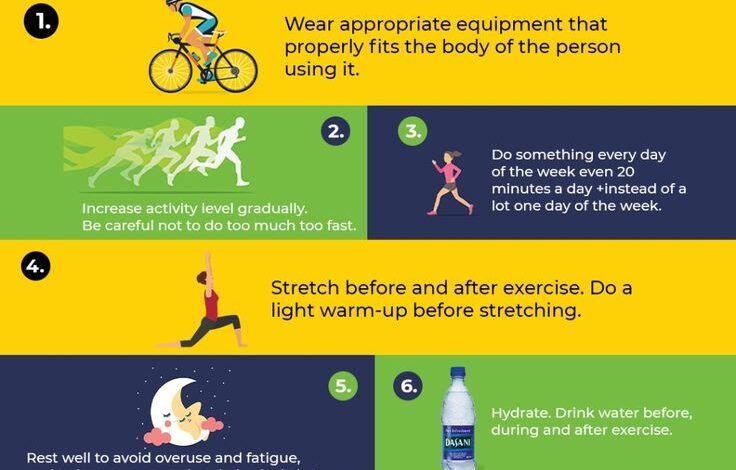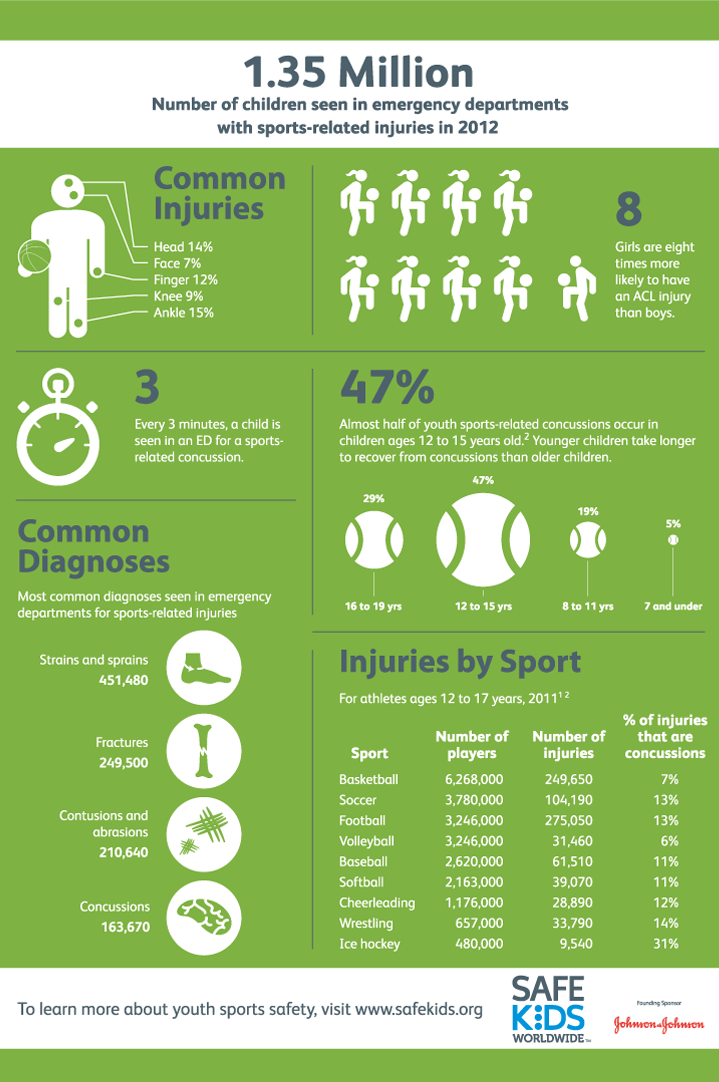Staying Active: Preventing Common Sports Injuries

“`html
Understanding Sports Injuries: A Comprehensive Guide
Whether you’re a seasoned athlete or just starting out with recreational sports, injuries are an unfortunate reality. The good news is that many sports injuries can be prevented with the right knowledge and precautions. This post will delve into common types of sports injuries, their causes, and – most importantly – how to minimize your risk through preventative measures.
Common Types of Sports Injuries
Sports injuries encompass a wide range, but some are more prevalent than others. Understanding these is the first step toward prevention.
- Sprains: These typically involve ligaments—the bands of tissue that connect bones at a joint. Ankle sprains and wrist sprains are very common, often occurring from sudden twists or falls.
- Strains: Unlike sprains which affect ligaments, strains involve muscles or tendons (tissue connecting muscle to bone). Hamstring strains, groin pulls, and calf strains are frequent occurrences in many sports.
- Fractures: These range from hairline fractures that are difficult to detect initially to more severe breaks requiring medical intervention. Impact sports like basketball, soccer, and football carry a higher risk of fractures.
- Dislocations: A dislocation occurs when a bone is forced out of its normal position in a joint. Shoulder dislocations are relatively common, particularly in contact sports.
- Tendonitis/Tendinopathy: This involves inflammation or degeneration of tendons. “Tennis elbow” (lateral epicondylitis) and Achilles tendonitis are examples. Repetitive motions can contribute to this type of injury.
- Concussions: A concussion is a traumatic brain injury caused by a bump, blow, or jolt to the head. They’re a significant concern in contact sports like football, hockey, and boxing, but can also occur in other activities.
- ACL Tears: Anterior Cruciate Ligament (ACL) tears are common in knee injuries, especially among athletes who participate in pivoting sports like soccer, basketball, and skiing.
What Causes Sports Injuries?
Several factors contribute to the risk of a sports injury. Recognizing these can help you take steps to mitigate them.
- Overuse: Repeated stress on bones, muscles, and tendons without adequate rest can lead to overuse injuries like tendonitis or stress fractures.
- Improper Technique: Incorrect form during exercise or sports activities puts undue stress on certain body parts, increasing injury risk. This is especially true for techniques involving repetitive motions.
- Insufficient Warm-up/Cool-down: Failing to properly prepare your muscles and joints before activity or neglecting a cool-down afterward leaves them vulnerable.
- Lack of Conditioning: Weak muscles and poor flexibility are less able to withstand the demands of athletic activity, making injuries more likely.
- Inadequate Equipment: Using poorly fitting or inappropriate equipment (shoes, protective gear) can increase the risk of injury.
- Environmental Factors: Playing in extreme heat or cold can impact performance and increase injury susceptibility. Uneven surfaces also contribute to a higher risk of ankle sprains.
- Sudden Impact/Trauma: Direct blows or falls are obvious causes, particularly in contact sports.
Preventing Sports Injuries: A Proactive Approach
The best way to deal with sports injuries is to prevent them from happening in the first place! Here’s a breakdown of preventative measures you can take.
Warm-up and Cool-down
A proper warm-up prepares your body for activity by increasing blood flow, flexibility, and muscle temperature. Start with light cardio (jogging, cycling) followed by dynamic stretching – movements that mimic the motions of your sport.

Cooling down helps gradually return your heart rate and breathing to normal while reducing muscle stiffness. Static stretches, holding a stretch for 15-30 seconds, are ideal for cool-downs.
Proper Conditioning
Strength training is crucial for building strong muscles that can protect your joints. Focus on exercises targeting the major muscle groups used in your sport. Flexibility training (stretching) increases range of motion and reduces the risk of strains. Cardiovascular fitness improves endurance and overall athletic performance, reducing fatigue which contributes to injury.
Technique & Form
Consider working with a coach or trainer to learn proper technique for your sport. Even small adjustments in form can make a significant difference in preventing injuries. Regularly review your technique – bad habits can creep in over time.
Equipment and Gear
Invest in quality equipment that fits properly. Shoes should provide adequate support and cushioning. Protective gear (helmets, pads, braces) should be worn when appropriate.
Gradual Progression
Avoid doing too much, too soon. Gradually increase the intensity and duration of your workouts to allow your body time to adapt.
Rest and Recovery
Adequate rest is essential for muscle repair and recovery. Overtraining leads to fatigue and increases injury risk. Listen to your body – don’t push through pain!
Hydration & Nutrition
Proper hydration and nutrition fuel your muscles and support overall health, contributing to resilience against injuries.
Specific Injury Prevention Strategies by Sport
While the general principles above apply to all sports, here are a few specific examples:
- Running: Focus on strengthening hip abductors and core muscles. Use proper running form (midfoot strike). Gradually increase mileage.
- Basketball/Soccer: Incorporate plyometric exercises to improve explosive power and landing mechanics. Strengthen the ACL and hamstring muscles.
- Tennis: Address imbalances between agonist and antagonist muscle groups (e.g., strengthen rotator cuff muscles to counter shoulder overuse).
When to Seek Medical Attention
Not all injuries require immediate medical attention, but it’s important to know when to seek professional help.
- Severe Pain: Pain that is intense and doesn’t improve with rest.
- Swelling: Significant swelling around a joint or muscle.
- Inability to Bear Weight: Difficulty putting weight on an injured limb.
- Deformity: Any visible deformity of a bone or joint.
- Numbness or Tingling: May indicate nerve damage.
Early diagnosis and treatment can often prevent minor injuries from becoming more serious.
Conclusion
Sports participation offers numerous physical and mental benefits, but it’s crucial to prioritize injury prevention. By understanding the common types of sports injuries, their causes, and implementing preventative measures, you can significantly reduce your risk and enjoy a long and healthy athletic career. Remember: Listen to your body, be proactive about conditioning, and seek professional help when needed.
“`



